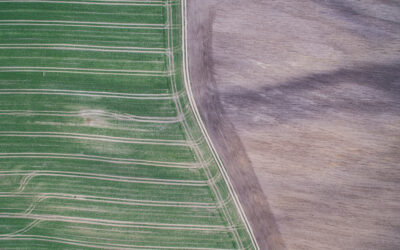As one of the nutrients most limiting to ecosystem productivity, phosphorus (P) and its cycling continues to attract attention from researchers across numerous disciplines. In their article, Sohrt et al. shine the spotlight on temperate forests and provide ranges and distributions of P pool sizes and flux rates in a quantitative manner.Controlling influences of the P cycle are described from a whole-ecosystem perspective. Cycling of P through soil, plant, and microbial biomass is given special attention as well as the influence of the hydrological cycle and major ecosystem disturbances. While being abundant in the bedrock of most temperate forests, P in bioavailable forms is often scarce, making it the subject of intense competition within and among species. Following the cycle of P through the ecosystem can provide the interested observer with a significant angle on ecosystem functioning as a whole. In light of the profound changes being imposed on the natural P cycle by human activity on the one hand and the utterly unsustainable use of geogenic P resources as fertilizer in agriculture on the other, a better understanding of the P cycle is more important than ever.

Fig. 1: The Phosphorus cycle in temperate forests. Representations of pools and fluxes are scaled to their average size. See the full paper for more detailed information and data sources.
Original inputs of P into a temperate forest can either occur from atmospheric deposition, or from the weathering of bedrock. Once inside the ecosystem P pool, it can be taken up by plants and microorganisms, which may compete for it, but also form symbiotic relationships to enhance their combined potential of P uptake. Phosphorus in tree biomass may persist for years or even decades, while the microbial P pool, being of similar size, has a much faster turnover and is more susceptible to short term changes of environmental conditions. Trees are able to re-absorb about half of the P content in their foliage before senescence, but litterfall still represents one of the major fluxes of P in temperate forests, and is complimented by the plants P uptake from the soil to compensate for this loss and sustain productivity.
Inorganic P is not only the fraction that is most easily bioavailable, it is also readily immobilized on organic and mineral soil particles. This has caused the evolution of sophisticated biochemical mechanisms to solubilize and transform P into bioavailable form, with the basic principles being shared among plants and microorganisms. The strong inclination of P to adsorb onto soil particles and its constant removal from soil water by plants and microorganisms keeps losses of P from temperate forests at a low level, comparable with the inputs. But this applies only in the absence of disturbances, natural or man-made, some of which have the potential to induce lasting changes to the local P cycle.
The laborious methods associated with the determination of P in any ecosystem compartment result in very few studies that venture beyond the scope of few specific issues. With their article “Quantifying components of the phosphorus cycle in temperate forests”, Sohrt et al. want to equip researchers from all disciplines with the means to place their own work on the P cycle within a broader thematic context.
Kindly contributed by Jakob Sohrt.
















